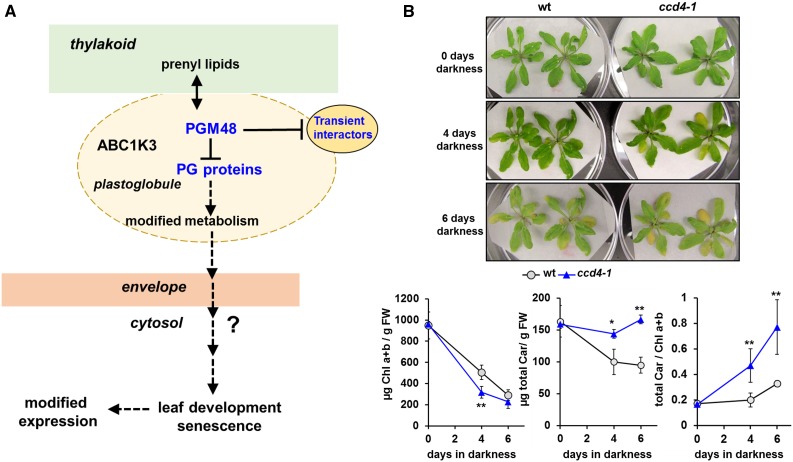Figure 9.
Model for PGM48 Function in Senescing Chloroplasts and Phenotype of the CCD4 Null Mutant during Dark-Induced Senescence.
(A) This model proposes that PGM48 degrades or partially cleaves one of more PG-localized proteins, resulting in modified metabolism and/or metabolite content, thereby accelerating leaf senescence through an unknown retrograde signaling pathway. Possible signals for induction or acceleration of senescence are ABA or JA. So far, no direct substrates for PGM48 have been identified, but we suggest CCD4 as a strong candidate (see Discussion).
(B) The Arabidopsis ccd4 T-DNA insertion null mutant (SALK_097984) shows accelerated dark-induced leaf senescence after 4 d darkness compared with the wild type as evidenced by accelerated chlorophyll degradation, whereas degradation of carotenoids is delayed (lower panels). Throughout dark-induced senescence, but not prior to darkness, carotenoid-to-chlorophyll ratios are higher in the ccd4 mutant, consistent with its role in carotenoid degradation (Gonzalez-Jorge et al., 2013). Student’s t test (*P < 0.1 and **P < 0.05).

